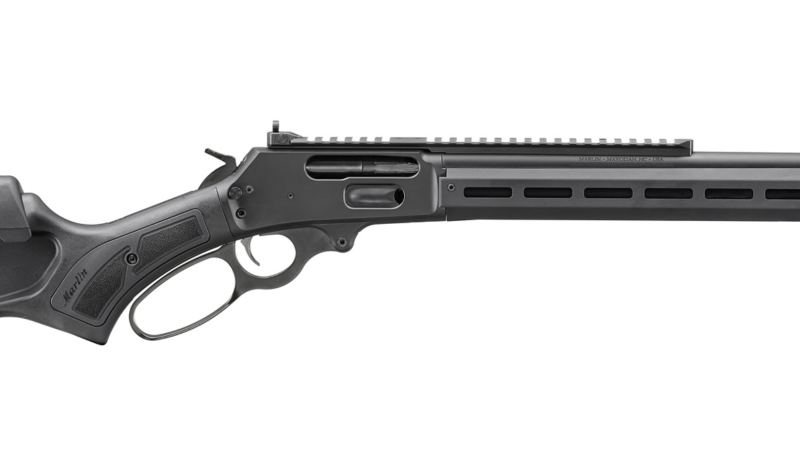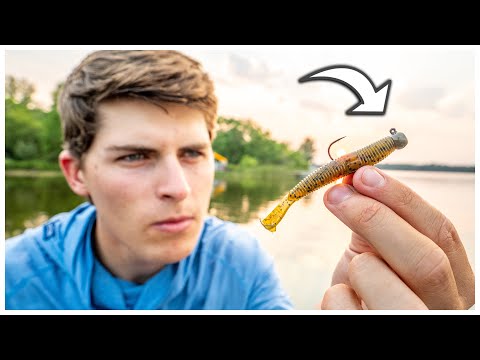How to Fish a Popper
We may earn revenue from the products available on this page and participate in affiliate programs. Learn More ›
A good topwater smash is one of the greatest experiences in fishing. Dozens of surface lures on the market can make them happen, but few are more popular or user-friendly than a popper. They come in all different colors and sizes, but the designs don’t vary too much. A scooped, concave mouth grabs the water when we twitch, spitting it forward and out to the sides. This surface commotion fires up all manner of predatory gamefish.
The thing is, anglers lean too heavily into a pop-and-pause cadence; make a little noise, give it a little rest. It’s deadly, no doubt, but there are other ways to cash in with these simple topwaters. Here are three tricks that’ll help you get more out of a classic popper.
The Speed Reel
By and large, anglers classify poppers as finesse lures. They offer the opportunity to control the cadence, but rarely does anyone lean on speed with a popper, especially in freshwater. In offshore saltwater fishing, tuna anglers routinely rip massive poppers across the surface, but many folks don’t realize this works in freshwater as well. In fact, legendary bass angler Rick Clunn won a lot of money in the early 80s reeling a Rebel Pop-R across the surface at warp speed.
The mistake anglers make is thinking a popper needs time to call fish in from a distance, so we pop a bit and stop. In the wild, however, a panicked baitfish swimming for its life is a massive trigger for predators, even when they’re not particularly hungry. Take, for example, flying fish in a saltwater environment. They zip across the surface creating a V wake, and the faster they move the more it amps up species like mahi-mahi and tuna.
If you cast out a popper and reel it back quickly (without popping), its scooped mouth will still grab water and throw it out to sides. It might not feel right to fish a popper this way, but it will feel really good when a bass hammers it. When that happens, it will be violent and out of nowhere.
The Bug Shake
The “bug shake” is a highly lethal and overlooked method of popper fishing, but to pull it off, you need a popper with a dressed tail. Many lures have one straight from the factory, often leaning on a pinch of white synthetic fiber or white feathers to give the rear treble hook a bit of extra pizzaz. If you don’t have a dressed popper, however, you can easily dress one yourself with a little super glue, thread, and some feathers from the craft store.
When a popper is sitting still, its treble hooks hang down just mere inches below the surface. A dressed tail hook looks exactly like a drowned aquatic insect in this scenario, and if there’s a bug hatch happening, this can work wonders. We like to think of poppers as lures that get slammed when a fish commits, but even big bass will come up and daintily nip that dressed hook thinking it’s a bug. Likewise, even smaller species like trout and bluegills that don’t have mouths big enough to take down the whole popper will hit that dressed tail. In a way, the method is the dirty cousin of flyfishing, but it works if you can train yourself to barely move that popper.
When fish are tuned into bugs, too aggressive of a chug can scare them faster than attract them, especially in clear water. You want to nudge your popper ever so gently, just enough to make that dressed hook quiver. Watch for the popper to disappear like a bobber or keep an eye out for subtle boils around the lure.
Read Next: Best Topwater Lures
The Up-And-Down
If you’ve ever fished in southern saltwater for seatrout or redfish, there’s a strong chance you’ve used a popping cork. These heavy bobbers feature a concave head that looks identical to a popper. You hang natural bait or a lure under the cork via a leader, cast out, and chug it back. The noise created by the cork draws the fish in, but the lure or bait trailing behind it makes the play. It’s highly effective, and easily replicated with a popper for freshwater fishing.
Start by removing the rear hook on your popper. Tie a short length of leader — no more than 12 inches — to the empty rear ring. Now you can add a trailing lure to the leader, but the trick is making sure it’s not too heavy. A small, soft-plastic finesse style bait or grub works well. By keeping the leader short, you reduce the odds of it tangling on the popper’s belly hook during the cast. This technique presents the illusion of two struggling baitfish simultaneously — one on the surface and the other just below. It’s especially effective for schooling fish like white bass and striped bass.
The post How to Fish a Popper appeared first on Outdoor Life.
Source: https://www.outdoorlife.com/fishing/how-to-fish-a-popper/





